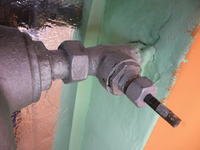The radiators are vented and when the regulator is set to 5 (maximum), the summer ones are only at the top of the radiator and so about 5 cm lower, and they are cold below. This includes two radiators in two rooms. It is very cold in the rooms. In the bathroom, when the regulator is set to 5, the radiator is warm to the point of burning. And the fourth radiator in the bedroom behaves like the two previous ones, but when set to 3, if I turn the regulator to 5, it does not heat and is cold the same as on 0. What is this about? maybe someone knows...? I would like to add that the apartment is in a multi-family block (150 apartments) with its own gas boiler room. No such problems with the neighbors. The previous two heating seasons were fine for me too. Please help and thank you in advance






